Gardening For Wildlife – 7 Steps to Create a Wildlife Garden
Local wildlife habitats are diminishing each year and more species are struggling to find adequate surroundings in which to survive. A wildlife garden plays a huge part in helping ease the pressures on our natural environment and contribute to slowing climate change.
People from across the globe love gardening, so why not have an Eco-friendly approach and save our dwindling resources at the same time?
There is nothing better than being in the fresh air, while the sun is shining. So get outside, roll up your sleeves and become one with mother nature in your very own wildlife garden.
Developing Your Wildlife Garden
Making a wildlife garden is the perfect way to clear your mind. There is no right or wrong way to do it, as long as you keep animal welfare in mind. Here are some fun ideas to get you started and before you know it your garden will be full of life!
1. Start With a Plantation of Trees, Plants, and Wildflowers
Creating an eco-friendly garden may not be as daunting as you may think. Just keep in mind the most important primary goal is to keep everything as natural as possible.
Creating a wildlife garden ultimately starts with the plantation of important trees. This provides shade and protection to numerous wildlife. Companion planting and a wildflower patch are great ways to start encouraging pollinators. Differing plants placed close to one another bring in a variety of wildlife and add bursts of color to your space.
The inclusion of lavender, honeysuckle, and foxgloves is a great way to keep the bees happy and is stunning to look at. Keeping your chosen plants native to your environment will require less water and saves energy on labor time. These plant varieties will attract pollinators which will help your wildlife garden thrive for years to come.
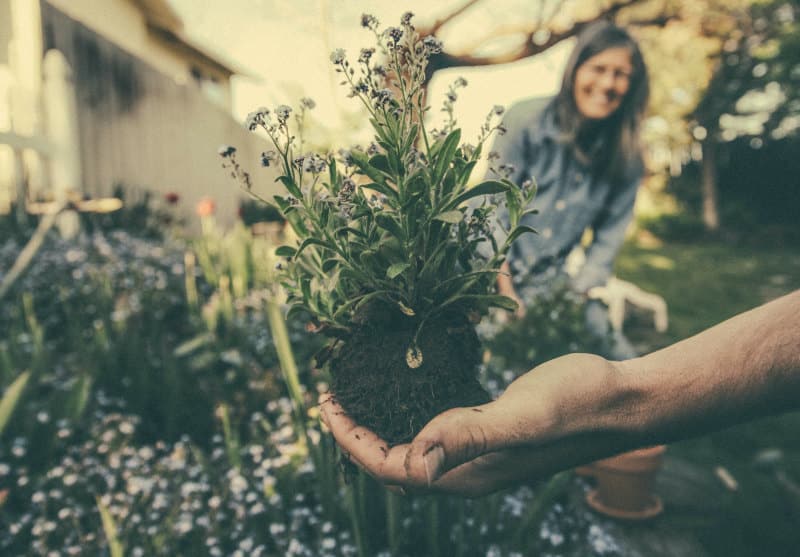
Downsizing your lawn may seem like a great deal of work but will ultimately lessen your future workload. By adding a feature rock garden, flowers, and shrubs, your space will be easier to maintain and require less water in the long run. This, in turn, will provide you with more time to relax and watch the wildlife enjoy your new surroundings.
The use of organic compost is extremely important to add nutrients and microorganisms to the earth’s soil. You can keep building it up organically by using left-over kitchen scraps like fruit and veg. Avoiding any pesticides, using non-GMO seeds, and providing barrels to conserve water all add to the creation of an Eco-friendly environment.
Finishing touches are also of great importance. Non-toxic garden furniture and solar lighting bring a sustainable finish and provide the perfect ambiance for you to relax and enjoy in your new wildlife garden.
2. Invite Butterflies Into Your Wildlife Garden
Sadly, droughts, climate change, pesticides, and loss of habitat are the main reasons the butterfly population is in desperate need of our help.
We can all make a few changes to help reverse the effect and provide a more natural sustainable environment for these delicate creatures.
How wonderful would it be to have a butterfly-friendly garden? Start by choosing a safe site for your butterfly garden. Just remember to provide a sunny spot that is sheltered from the wind.
The plantation of trees and shrubs would be a great natural way of providing them with shelter. Butterflies are also cold-blooded, so the addition of a few flat rocks placed in sunlight is a perfect way for them to warm up in the colder mornings.
Elderberry, sweet spire and nectar-rich flowers like zinnias and pentas are adored by butterflies.
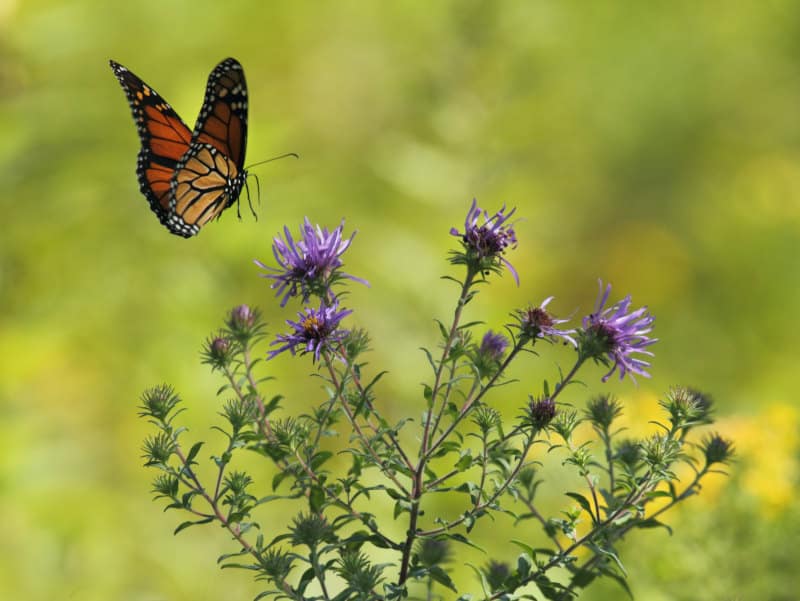
Flowering containers and hanging baskets could also be included in your wildlife garden. This will add color to your garden and benefit the butterflies. It is extremely important to use brightly colored, differing height plants and bushes within your space. This provides them with specific feeding niches and protects them from predators.
Don’t forget to provide them with water! A simple shallow dish filled with sand will suffice. Just bury the rim of the bowl in the ground and fill it daily with water to keep the sand damp.
You could always go a step further and create an organic butterfly shelter. A simple log pile with gaps in the corner of the garden is perfect and protects them from predators and bad weather.
Sit back, relax and enjoy the brightly coloured butterflies, knowing you have not only given them a home but also benefited the planet at the same time.
3. Encourage Birds Into Your Wildlife Garden
Birds consume thousands of insects, so they are beneficial and help create a healthy wildlife garden. The best way to entice them into your space is by planting fruit bushes such as elderberry, raspberry, blackberry, and holly.
This will provide the birds with a natural food source all year round. In addition, you could include fixed or hanging bird tables, just remember to keep them up high out of the reach of predators.
Homemade bird feeders can be made from old milk bottles, teapots, and calved-out logs. Suet, sunflower seeds, and mealworms will also entice a multitude of birds into your garden.
Why not cut an orange in half, fill it with seeds and attach to a tree with a piece of string? It adds color, is completely natural, and smells wonderful.
Bird feeders encourage birds into a bird box that needs to face the northeast. This provides a safe environment with no direct sunlight, wind, or rain.
You can make your own bird-box out of scraps wood or buy an eco-friendly one already constructed.
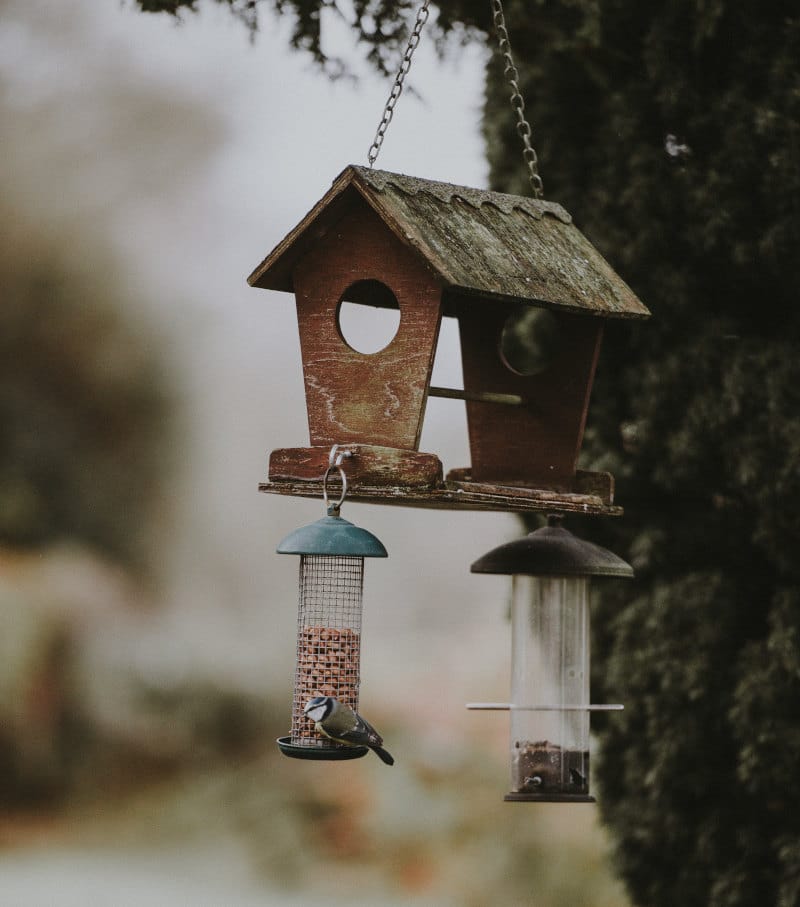
Always place your bird-box at least 2 meters off the ground if there are cats around to keep them safe. in your wildlife garden.
The bird box is best placed around pleasant foliage and try to make sure the entrance is never blocked.
Placing a small amount of sawdust at the bottom of the birdhouse provides them with insulation in colder conditions.
Birdbaths and fountains are also an especially important addition to the bird’s well-being, especially in extreme weather conditions. This will provide drinking water and you can watch them while they have a bath!
There is nothing better than enjoying the sound of birdsong, watching them flutter around your wildlife garden knowing nature is in balance.
4. Build an Eco Pond in Your Wildlife Garden
No matter what size wildlife garden you have there is always a possibility of adding a pond, however small. Ponds make a wonderful addition to any garden, are ecologically friendly, and provide a well- balanced surroundings. Just try to ensure all the products you buy to maintain your pond are Eco-friendly!
The main consideration when installing a pond is ensuring it is deep enough to support life. Including aquatic plants is important to provide natural foods and oxygen. Hyacinth and water lettuce are natural filtering plants that also reduce algae. Installing a biofilter helps aid the pond’s circulation to balance the oxygen present and increases aeration.
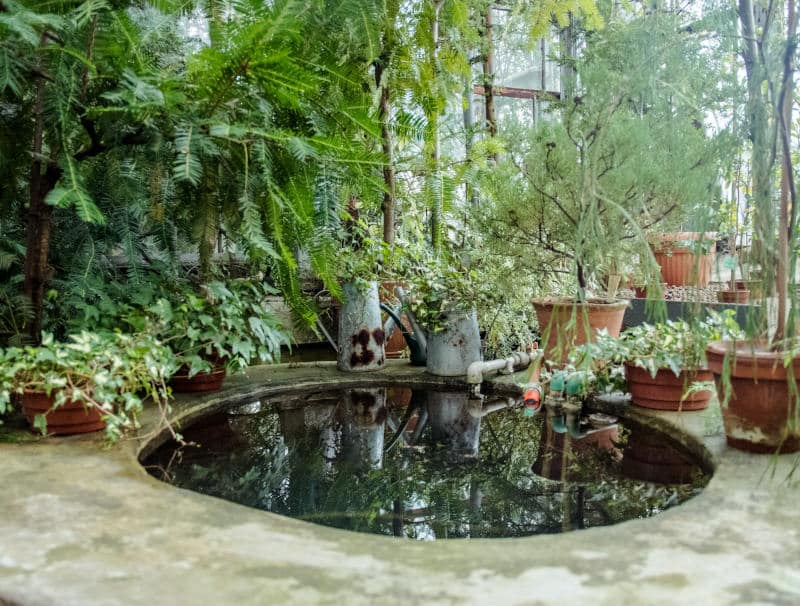
It is quite important to provide some shade over the pond to keep a hold over aquatic weeds like duckweed. The safety of other natural wildlife is also of utmost importance and placing small half-submerged flat rocks, enables hedgehogs or other small mammals a way of escaping the water.
The pond will be a natural haven for all kinds of wildlife including frogs, newts, pond skaters, and dragonflies. Watch the swallows and house martins eat insects from the surface of your newly created natural environment in your wildlife garden.
An ecologically natural pond will be sensitive to aquatic environments and any visiting wildlife while also being easy to maintain.
5. Create a Happy Hedgehog Haven
In the last ten years, there has sadly been a 25% decline in the hedgehog population. The main contributors are loss of habitat, pesticides, slug pellets, bonfires, and motorists. It takes very little effort to create a safe refuge for them.
Making sure ponds have escape routes with gently sloping edges and flat half-submerged stones are simple and effective solution to keeping them safe.
Hedgehogs also only require a 13×13 hole in your fence to have access to your garden. They will find refuge in a leaf or log pile, so why not dedicate a small area of your wildlife garden to keeping them safe and warm.

You could even go a step further and construct a small nesting box to give them a chance to raise their family in safety away from predators.
Providing supplementary food gives them a fighting chance of survival, and the presence of water bowls is especially important in the summer months. Wet dog and cat food are perfect for them but please never put down bread or milk as this will be detrimental to their health.
Check periodically for baby hedgehogs or hedgehogs out in the daytime as this is not natural behavior and it could indicate they may have a problem. If you feel a hedgehog is in trouble or in need of assistance, please contact the British hedgehog society for advice.
6. Take Care of our Red Squirrels
Red squirrels have been in decline for decades due to the introduction of grey squirrels, loss of habitat, road traffic, and predators. Planting trees and shrubs in your wildlife garden would provide them with a natural food source and safety.
Brambles, dog rose, crab apple, and wild cherry create a wonderful variety for their diet. Introducing thorny bushes into your surroundings also provides them with a haven away from predators.
Squirrel houses and feeding stations can be constructed out of any wooden off-cuts you may have to lie around. With a little inspiration, you could turn them into a bespoke feature of your garden.
Place them at least 6 feet up a tree for a quick escape route and a peaceful environment to rest. Always try to check out their natural route before placing the houses and feeding stations around your garden, so they can be easily found.
Summer is the hardest time for the squirrels to find food and they require as much help as possible. Supplementing them with hazelnuts, pine nuts, sunflower seeds, fruit, and vegetables will allow the squirrels to graze and also stock up for the long winter ahead.
Just try to keep the feeding stations clear of any moldy or unused food and put out fresh snacks whenever possible. Keeping a small patch of untouched land in your garden also helps them immensely. This gives them a place on the ground to feel safe and covered from any predators.
If you are lucky enough to have red squirrels as guests in your wildlife garden please record their sightings in a logbook, take pictures and report sightings to the National wildlife trust. They will be thrilled to hear from you!
7. Create an Insect Hotel in Your Wildlife Garden
Insects are an extremely important part of the ecosystem and an urban solution for the ever-changing planet.
Building your own insect hotel can be achieved by utilizing your own materials. Try to keep the sustainable eco-design small and simple, while also making sure the structure is sturdy with a solid back and roof.
Be realistic, smaller is better and this means you can always make more than one! The designs are endless and try to make it aesthetically pleasing and natural, with no chemicals or man-made products.
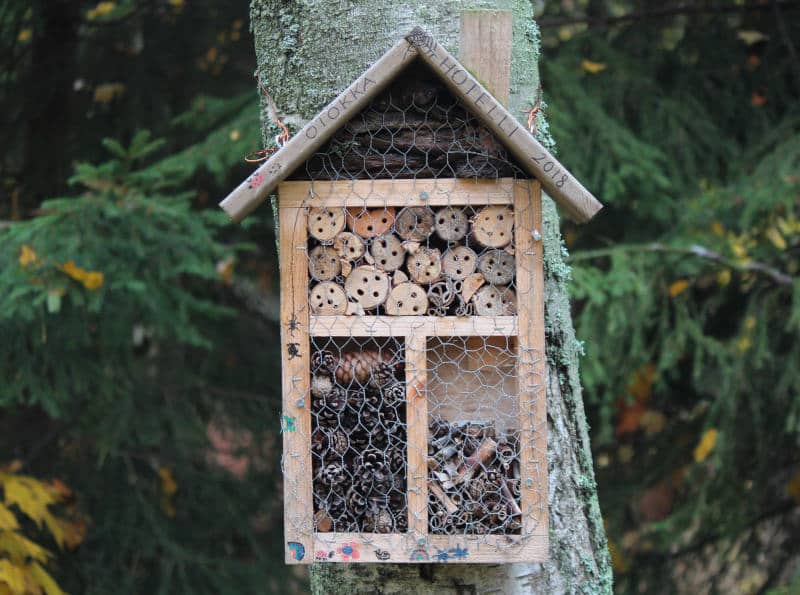
You can start to create your insect home any time of year. Just use old bits of wood, straw, moss, wood chippings, dry leaves, and bamboo cane.
Choosing the right location to house your insects is quite important. A damp moist spot in a shady area under a tree or close to a hedge would be a perfect position for them, just making sure the base is level and sturdy.
The insect hotel requires little maintenance and will degrade naturally within 2-3 years.
Planting native species of shrubs also helps promote natural biodiversity for the insects and other wildlife to enjoy. Adding an insect or bee bath is another great idea to invite insects into your garden.
Your bespoke home will offer a natural sanctuary and is beneficial to insects and pollinators.
The insect hotel will also help control other pests and aid in plant pollination in your wildlife garden, so it has a positive overall effect on your environment. Choose which insects you want to host and get creating!
Enjoying your Perfect Wildlife Sanctuary
Wildlife habitats are constantly diminishing, which is having a detrimental effect on our wildlife population. By educating ourselves, family, and friends, and with a little hard work, we can all start creating a little utopia for our wildlife to enjoy and flourish in.

Simple changes such as providing a small untouched wild area will undoubtedly have a positive effect on the survival of our wildlife. Let nature take its course, keep things natural, and accept that imperfections are okay in your wildlife garden.
Leave pots with a weathered look and try not to worry about scraping moss off stones. Offer trees and shrubs of differing heights, bring color into your space, and go pesticide-free.
Then sit back relax, enjoy your natural surroundings, and feel proud of your achievements. Why stop there?
Try converting to sustainable clothing brands or check out our articles about cottagecore, apartment gardening and eco-friendly interior design ideas for your home. Not only will going sustainable help the planet but also help you live a healthier lifestyle.